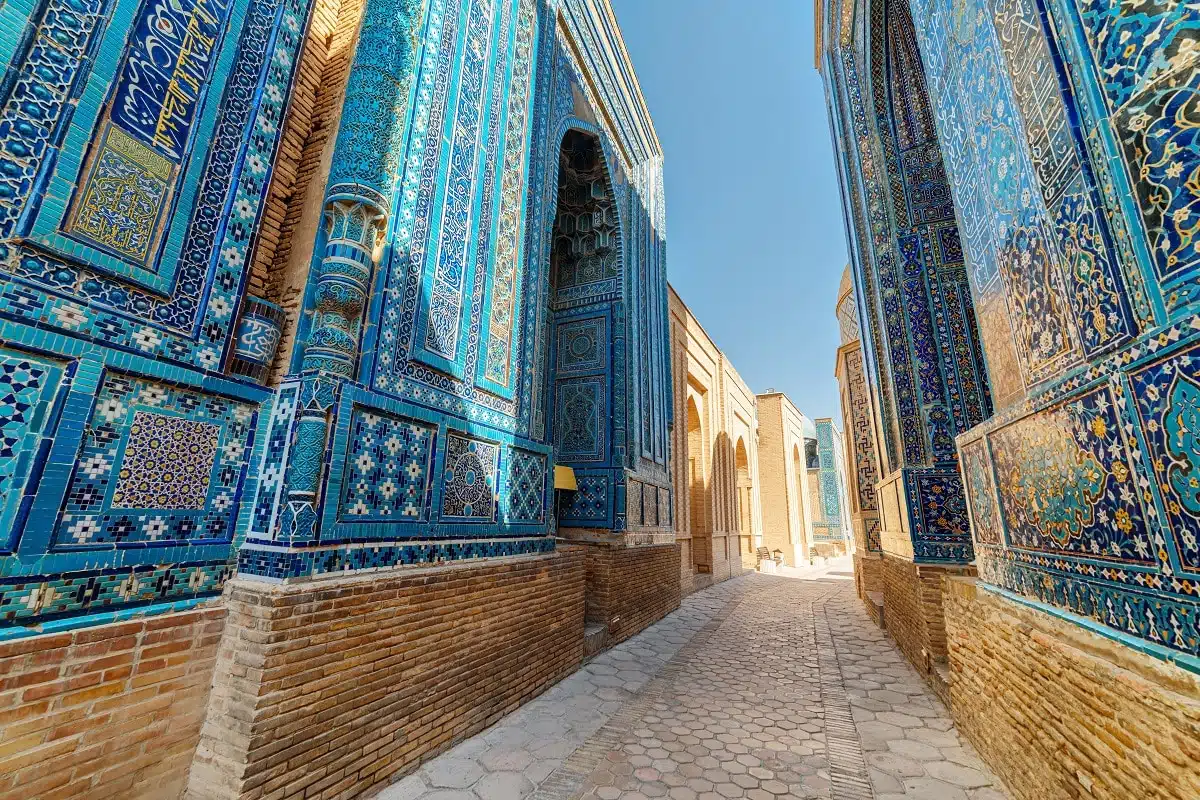The Silk Road, an ancient network of trade routes, has been a symbol of cultural and commercial exchange between the East and the West for centuries. Stretching from the heart of Asia to Europe, it offers a journey through diverse landscapes, rich histories, and a mosaic of cultures. This guide takes you on a voyage across ten key destinations along the Silk Road, each with its unique allure.
Embarking along the Silk Road is like traveling through the pages of history. It explores ancient civilizations, bustling bazaars, and architectural marvels. This route, once traversed by merchants, scholars, and adventurers, now beckons modern travelers seeking to experience a blend of history, culture, and natural beauty.
Xi’an, China
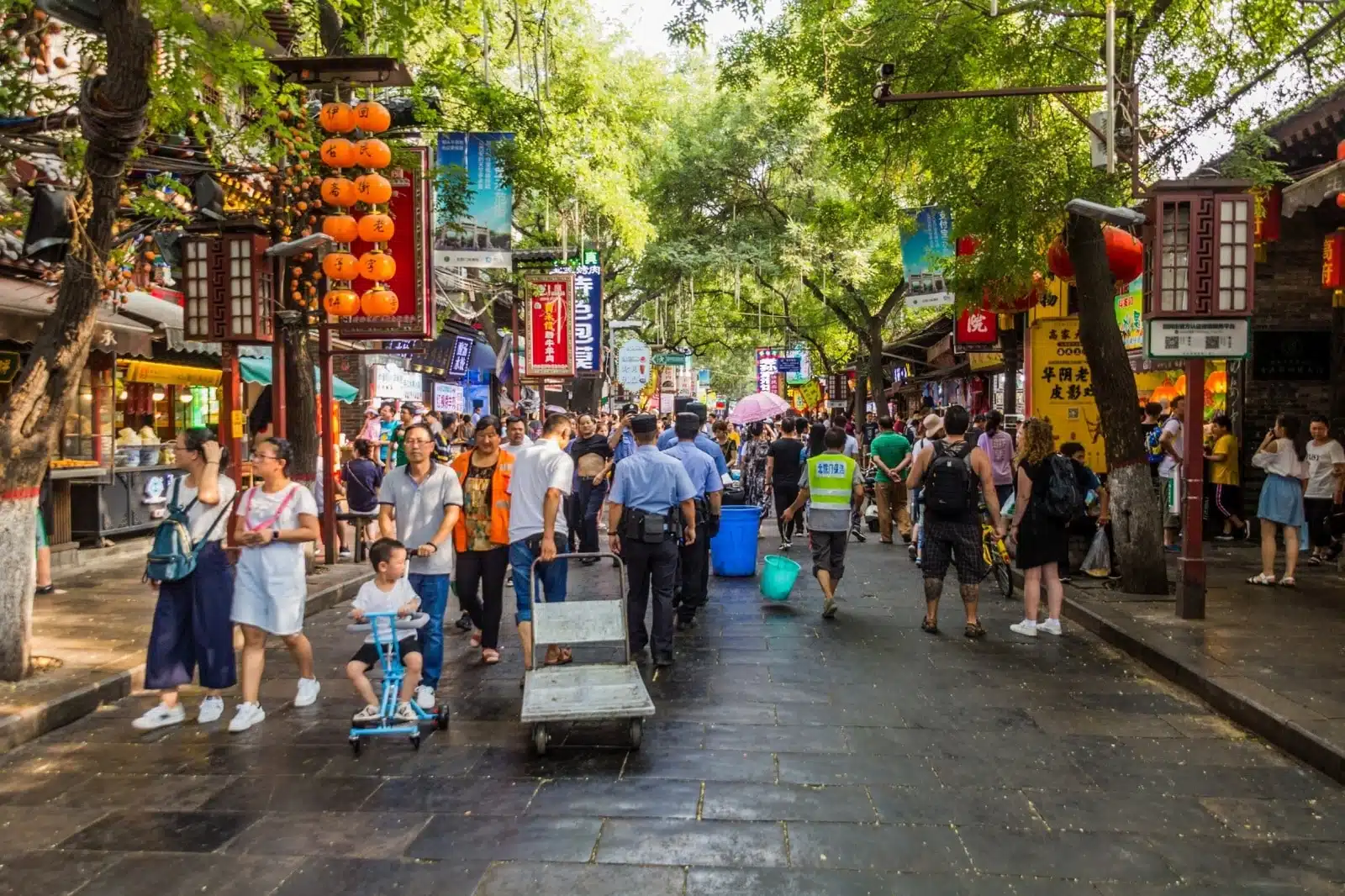
Image Credit: Shutterstock / Matyas Rehak
In Xi’an, the starting point of the Silk Road, you’ll witness a remarkable blend of ancient history and modern development. Once a capital of empires, this city is where you can marvel at the famous Terracotta Army, an awe-inspiring legacy of China’s ancient past. As you walk through the city, the ancient walls, standing since the Ming Dynasty, encircle and protect the old city, offering a tangible connection to Xi’an’s historical significance. Don’t miss exploring the Muslim Quarter, a vibrant neighborhood that reflects the cultural exchanges of the Silk Road. Here, amidst bustling markets and aromatic food stalls, you’ll experience the diverse cultural influences that have shaped Xi’an over the centuries. This city is a gateway to understanding the depth and richness of the Silk Road’s history.
Insider’s Tip
Visit the Muslim Quarter to taste Xi’an’s diverse cultural influences.
When To Travel
Spring (March to May) and autumn (September to November) offer pleasant weather.
How To Get There
Fly into Xi’an Xianyang International Airport.
Samarkand, Uzbekistan
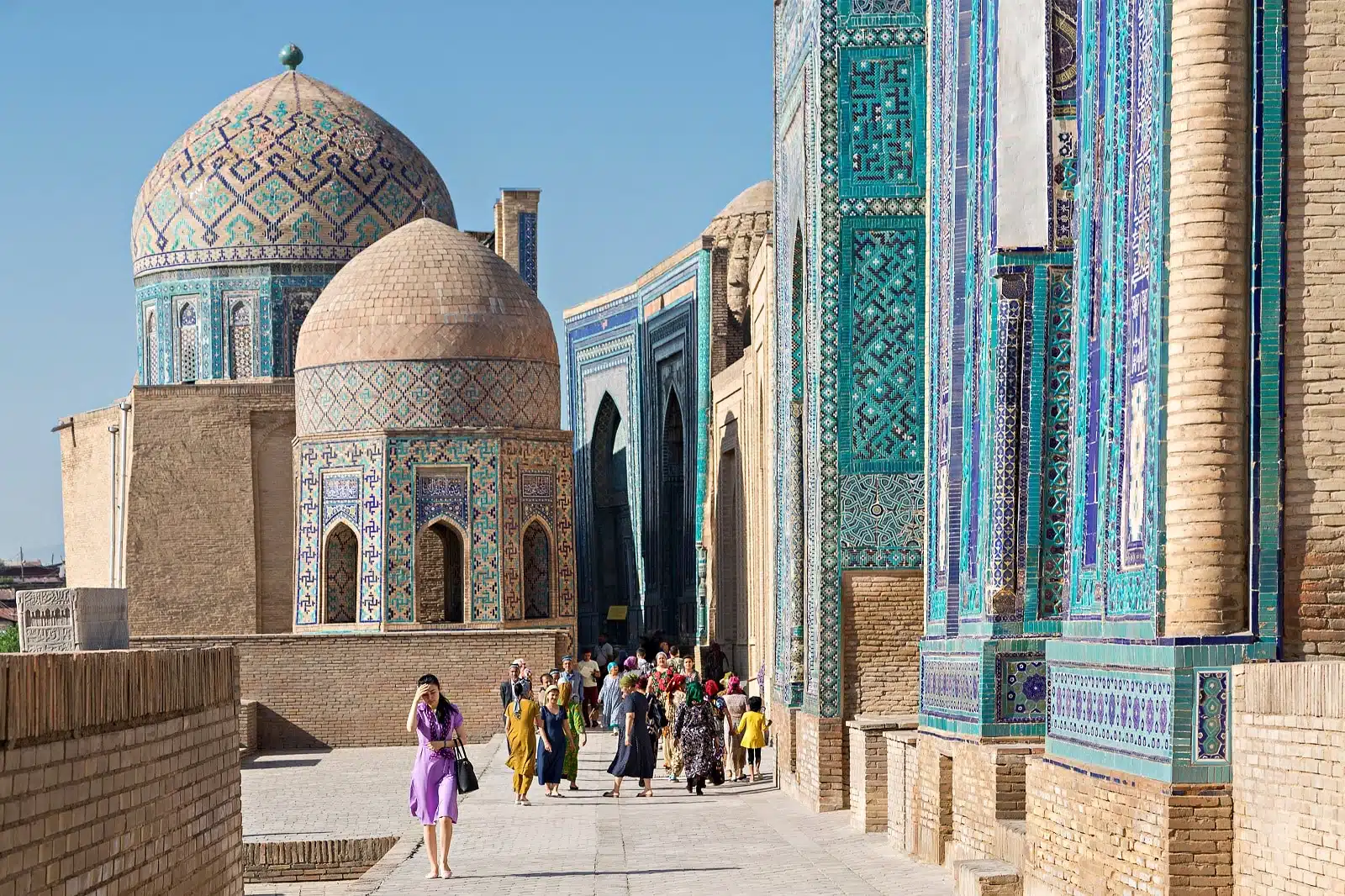
Image Credit: Shutterstock / MehmetO
Often referred to as the jewel of the Silk Road, Samarkand, you’ll find yourself amid some of the world’s most majestic Islamic architecture. This city, steeped in history, showcases masterpieces of ancient craftsmanship at every turn. As you wander Registan Square, you’ll be surrounded by grand madrasahs with intricate tile work telling stories of a bygone era. The Shah-i-Zinda, a necropolis lined with beautifully decorated mausoleums, offers a serene yet profound insight into the city’s past. Don’t miss the Bibi-Khanym Mosque, once one of the Islamic world’s largest mosques, as a testament to the city’s historical significance. In Samarkand, every corner, every street, and every building is a piece of the rich tapestry of cultures that met and mingled here, making it a city that truly embodies the spirit of the Silk Road.
Insider’s Tip
Don’t miss the Registan at sunset for a breathtaking view.
When To Travel
Late spring (April to June) and early autumn (September to October).
How To Get There
Fly to Tashkent and take a high-speed train or drive to Samarkand.
Bukhara, Uzbekistan
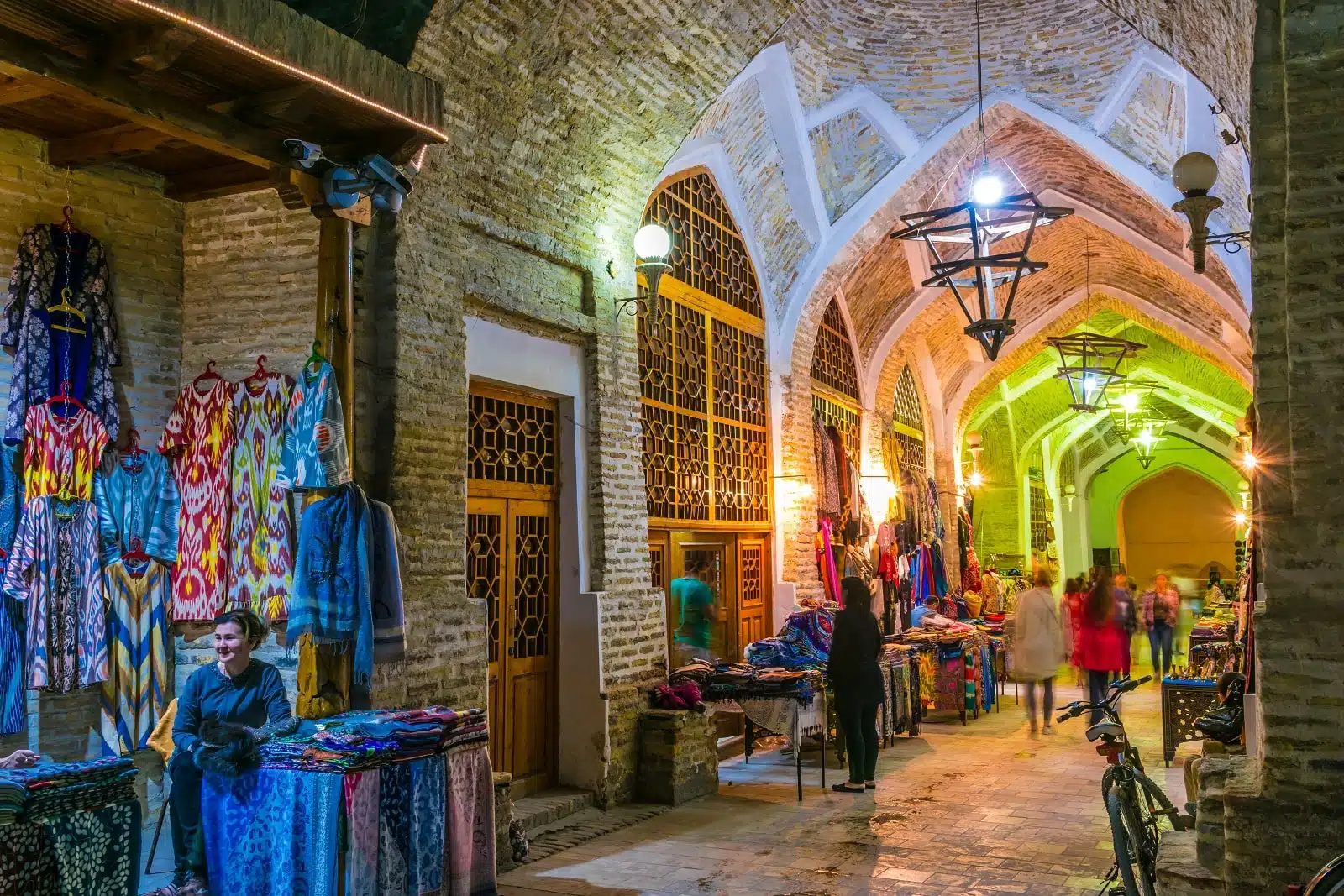
Image Credit: Shutterstock / monticello
Bukhara is a city recognized as a UNESCO World Heritage site; you’ll step into what feels like a living museum, rich with the history of the Silk Road. This city’s well-preserved medieval center is a labyrinth of historical treasures, where every turn and alleyway leads you deeper into a past era. As you explore, you’ll encounter numerous madrasahs, mosques, and bazaars that have stood the test of time, each telling its story of the city’s vibrant history. Don’t miss the Ark Fortress, a massive structure that has been pivotal in Bukhara’s landscape for centuries, offering insights into the city’s ancient military and political significance. Equally compelling is the Ismail Samani Mausoleum, one of the city’s oldest and most revered buildings, known for its intricate brickwork and architectural beauty. In Bukhara you can walk through, touch, and experience in every corner of this timeless city.
Insider’s Tip
Explore the city’s ancient trading domes for unique souvenirs.
When To Travel
Spring and autumn for the best climate.
How To Get There
Bukhara has its own international airport, or you can travel from Samarkand by train or car.
Khiva, Uzbekistan
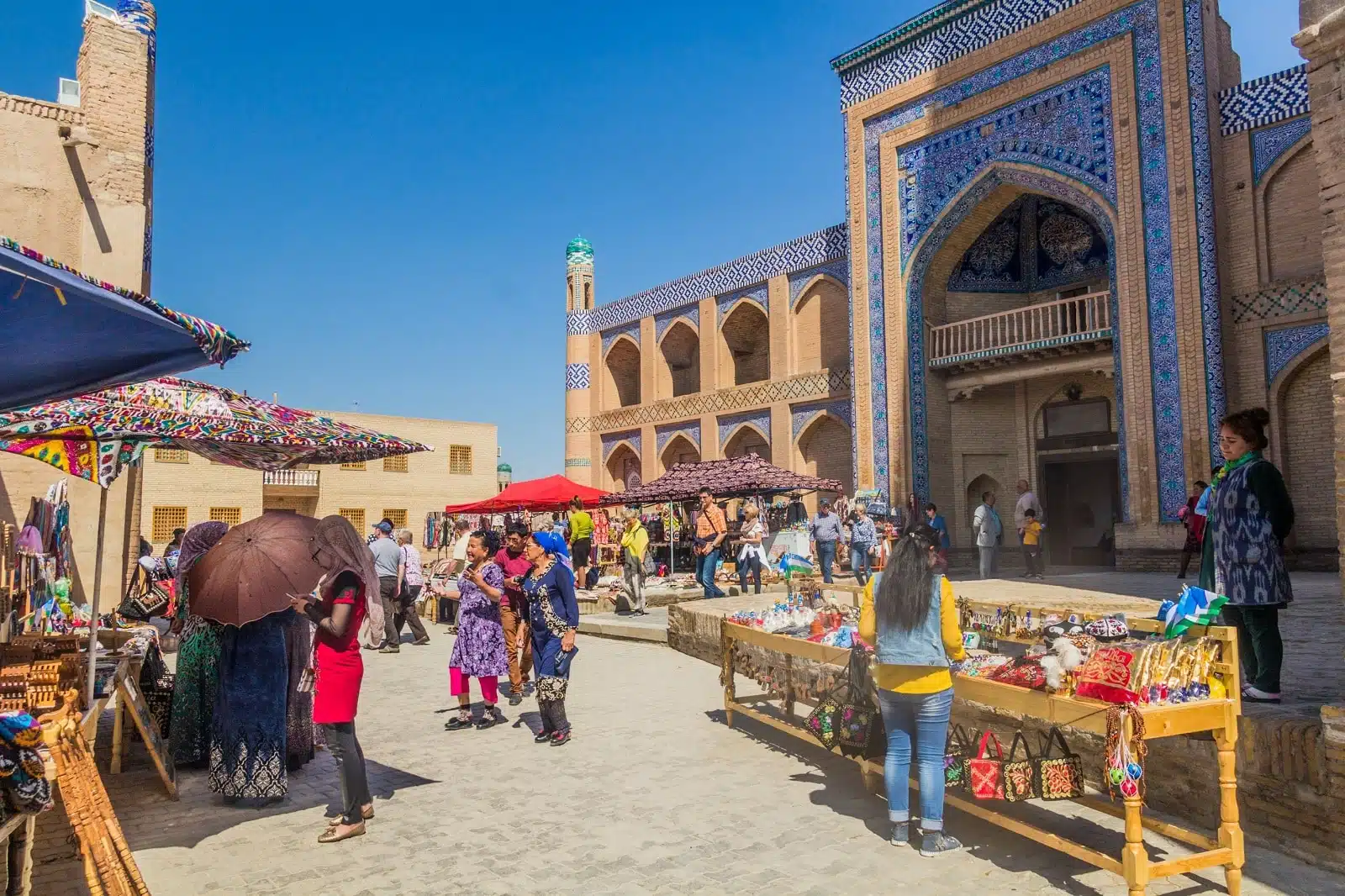
Image Credit: Shutterstock / Matyas Rehak
In Khiva, you’ll find yourself in a city that seems to have halted the march of time, particularly within the walls of its inner town, Itchan Kala. This area, a UNESCO World Heritage site, encapsulates the essence of the medieval Silk Road. Walking through its narrow lanes, you’re surrounded by a history that feels almost tangible. The city’s architecture, characterized by intricate tile work, leaves a lasting impression. Notable landmarks like the Kalta Minor Minaret, with its striking blue tiles, and the Juma Mosque, known for its beautifully carved wooden columns, stand as testaments to the artistic and architectural ingenuity of the past. Khiva isn’t just a stop on your journey; it’s a portal into a world where the legacy of the Silk Road is preserved in every brick and tile.
Insider’s Tip
Climb the Kunya-Ark fortress for panoramic views of the city.
When To Travel
May to early July and September to October.
How To Get There
Fly to Urgench and take a short drive to Khiva.
Ashgabat, Turkmenistan
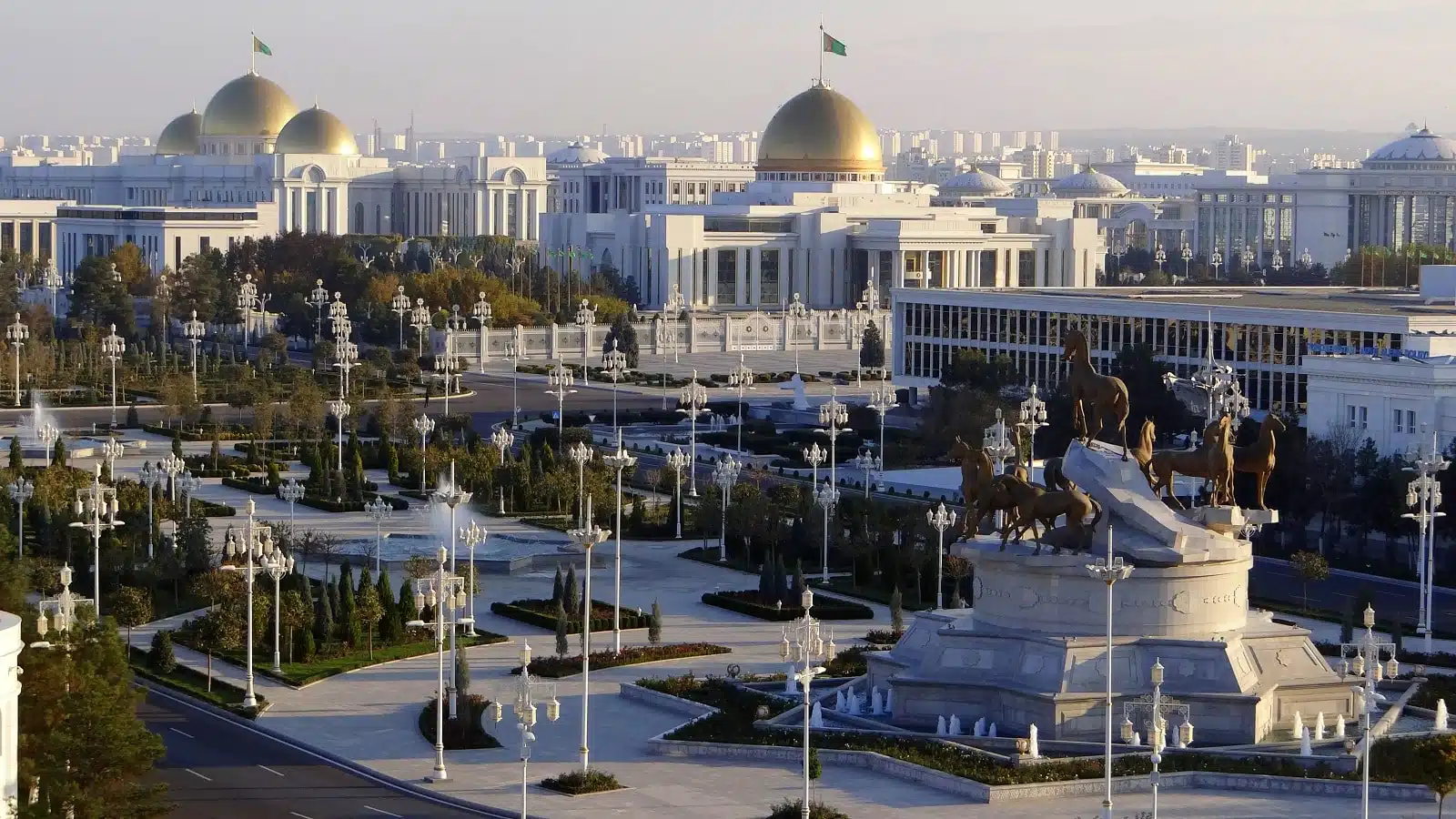
Image Credit: Shutterstock / gonetothemoon
You’ll encounter a city that presents a unique blend of modernity and history in Ashgabat, the capital of Turkmenistan. Known for its striking contemporary architecture and gleaming marble buildings, Ashgabat is a testament to Turkmenistan’s recent development. The city’s wide boulevards and grandiose structures give it a distinctive character. However, beyond its modern facade, Ashgabat serves as a gateway to the rich history of the Silk Road. Just a short distance away lies the ancient site of Nisa, a significant remnant of the Parthian Empire. Here, you can explore the ruins and relics that offer a glimpse into a civilization that once played a crucial role in the history of the Silk Road. Ashgabat, therefore, offers you a unique experience where you can witness the contrast between Turkmenistan’s present and its ancient past.
Insider’s Tip
Visit the Tolkuchka Bazaar for traditional Turkmen crafts.
When To Travel
Spring (April to June) and autumn (September to November).
How To Get There
Fly into Ashgabat International Airport.
Tehran, Iran
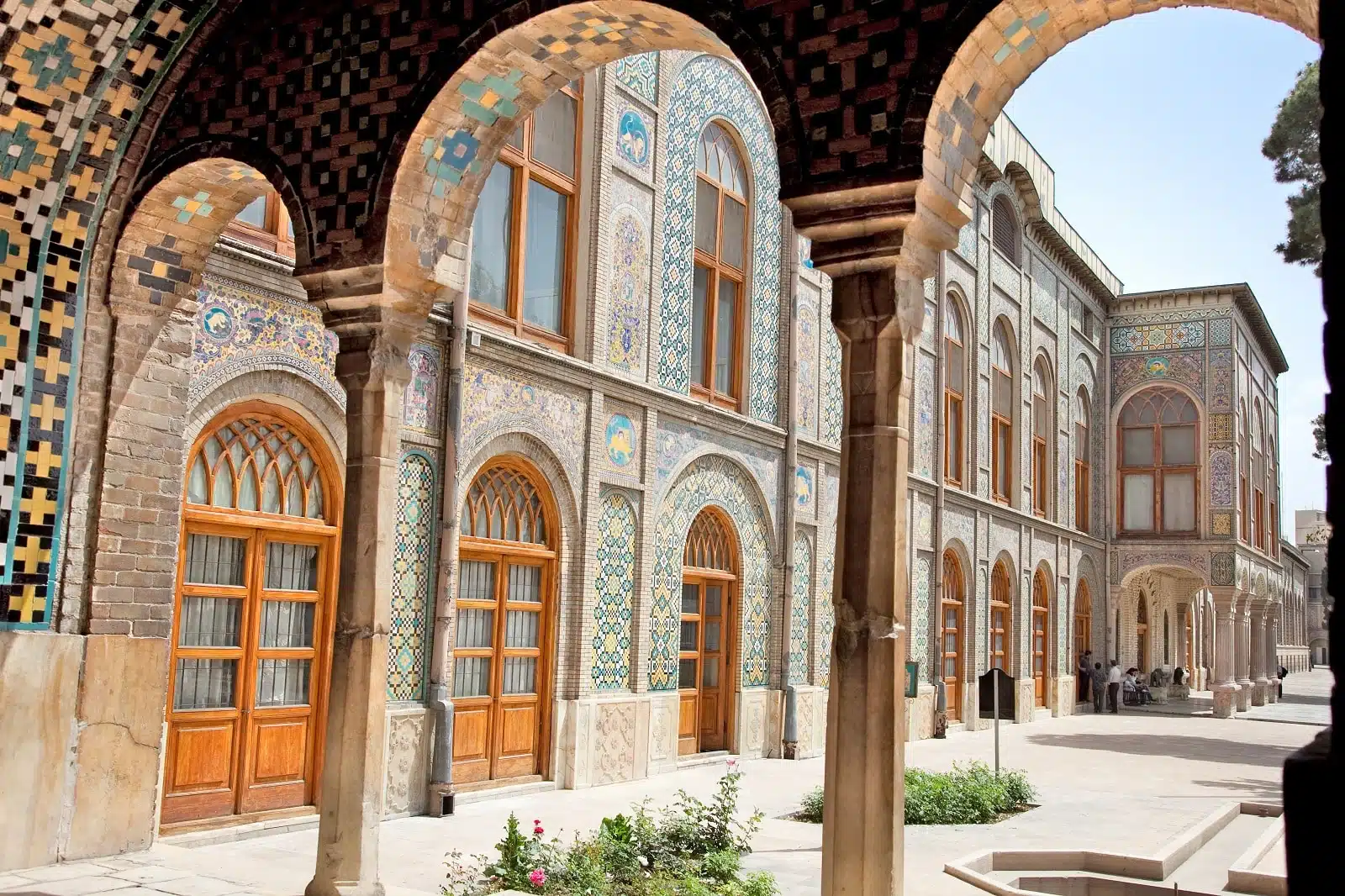
Image Credit: Shutterstock / Aleksandar Todorovic
Tehran, the dynamic capital of Iran, is at the crossroads of modernity and ancient history. This city, pulsating with life, serves as your introduction to the ancient Persian segment of the Silk Road. As you navigate through Tehran, you’ll encounter a rich tapestry of history displayed in its grand palaces, such as Golestan Palace, which echo the opulence of past dynasties. The city’s museums are treasure troves of Persian history, art, and culture, offering insights into the civilization that once thrived along the Silk Road. Don’t miss the chance to experience the lively atmosphere of Tehran’s bazaars, especially the Grand Bazaar, where the hustle and bustle perfectly encapsulate the blend of Iran’s rich heritage with its contemporary urban culture. Every corner in Tehran tells a story, giving you a vivid glimpse into Iran’s past and present.
Insider’s Tip
Explore the city’s bazaars and museums to better understand Persian culture.
When To Travel
Spring and autumn for mild weather.
How To Get There
Fly into Tehran Imam Khomeini International Airport.
Istanbul, Turkey
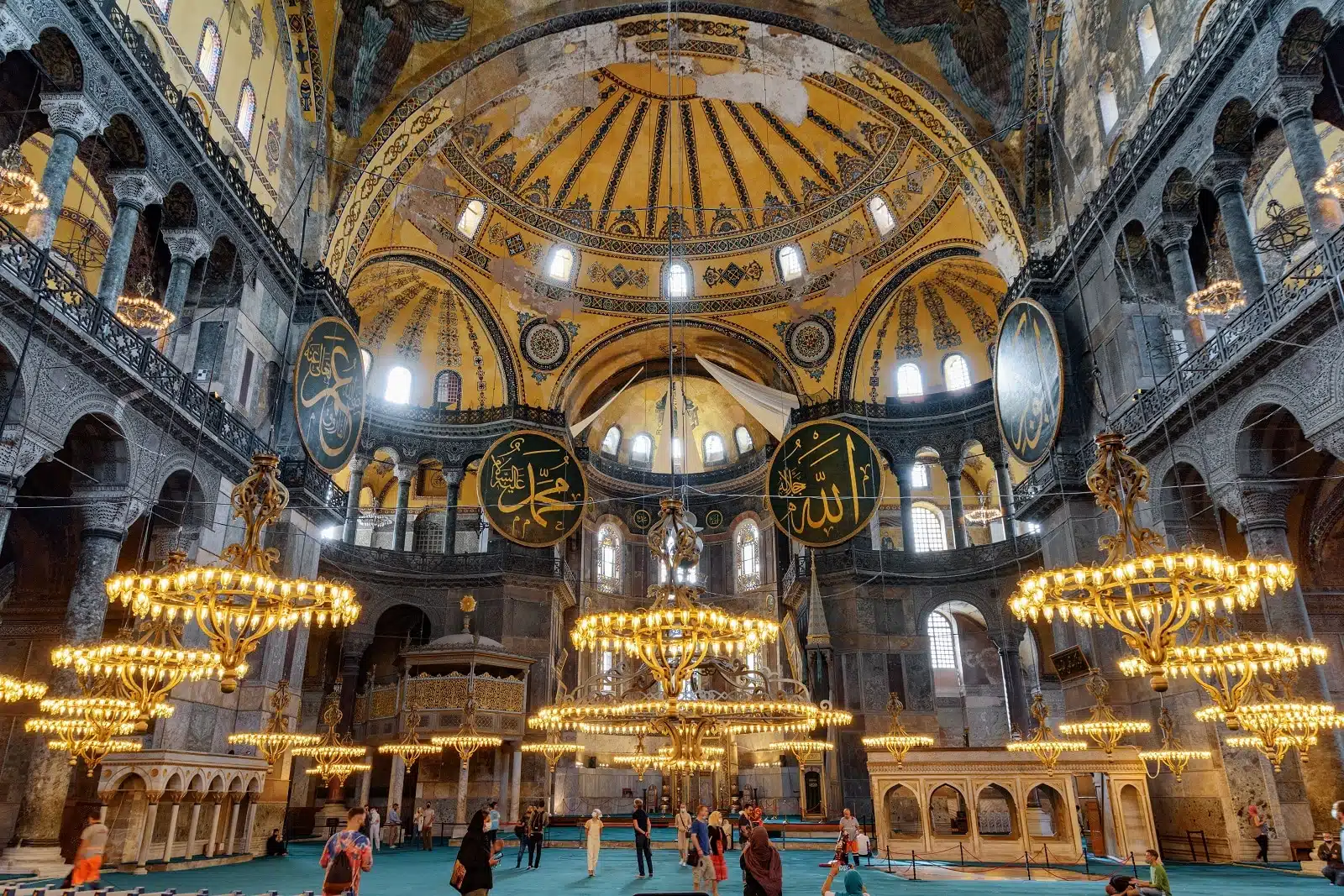
Image Credit: Shutterstock / Efired
Istanbul is a city straddling two continents, where you’ll experience the unique blend of Eastern and Western cultures. This historic metropolis, where the Silk Road culminated in Europe, is a melting pot of diverse cultural influences. As you explore, you’ll be drawn to the Hagia Sophia, a marvel of Byzantine architecture that has stood as a testament to the city’s changing rulers and times. Nearby, the Blue Mosque, with its iconic cascading domes and six minarets, offers a glimpse into the city’s Islamic heritage. Another must-visit is the Topkapi Palace, once the heart of the Ottoman Empire, where you can wander through opulent courtyards and view treasures from a bygone era. Each of these landmarks embodies Istanbul’s rich history and tells the story of a city that has been a pivotal crossroads of trade, culture, and civilization.
Insider’s Tip
Take a Bosphorus cruise for stunning views of the city.
When To Travel
Late spring (April to June) and early autumn (September to October).
How To Get There
Istanbul is accessible via two international airports, Istanbul Airport and Sabiha Gökçen Airport.
Baku, Azerbaijan
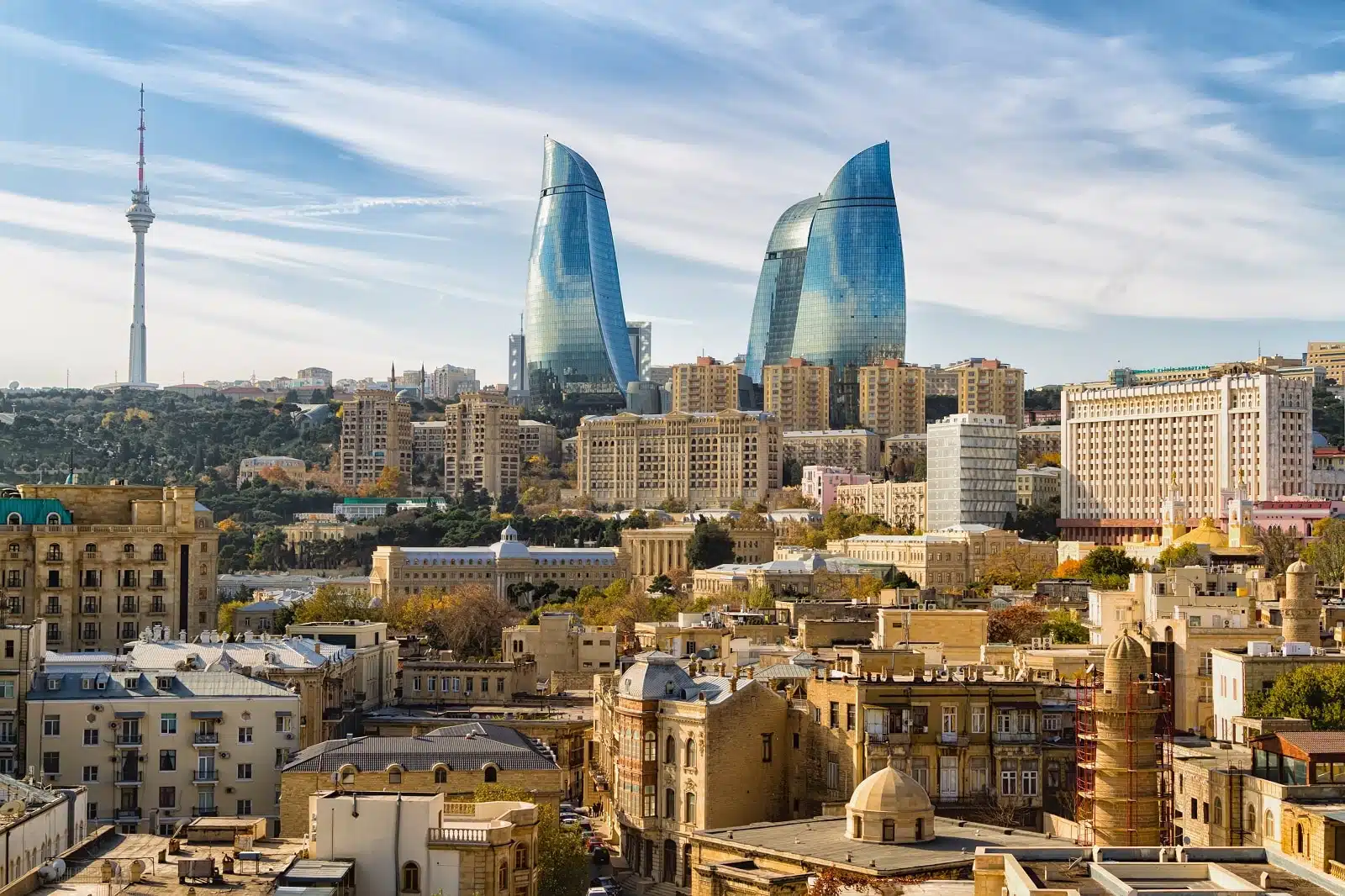
Image Credit: Shutterstock / Milosz Maslanka
You’ll find Baku, Azerbaijan’s capital, a fascinating blend of the ancient and modern. This city, perched on the Caspian Sea, seamlessly merges its historical roots with a contemporary edge. As you wander through the UNESCO-listed Old City, Icherisheher, you’ll be surrounded by well-preserved medieval walls and towers that hark back to Baku’s historical significance. The contrast between the old and the new is striking, especially when you see the ancient caravanserais and the Maiden Tower juxtaposed against the city’s modern skyline, featuring iconic structures like the Flame Towers. Baku’s unique blend of history and modernity makes it a captivating stop on your journey. It offers a glimpse into Azerbaijan’s past and its ambitious leap into the future.
Insider’s Tip
Visit the Old City for a taste of Baku’s ancient heritage.
When To Travel
April to June and September to October for the best weather.
How To Get There
Fly into Heydar Aliyev International Airport in Baku.
Tbilisi, Georgia
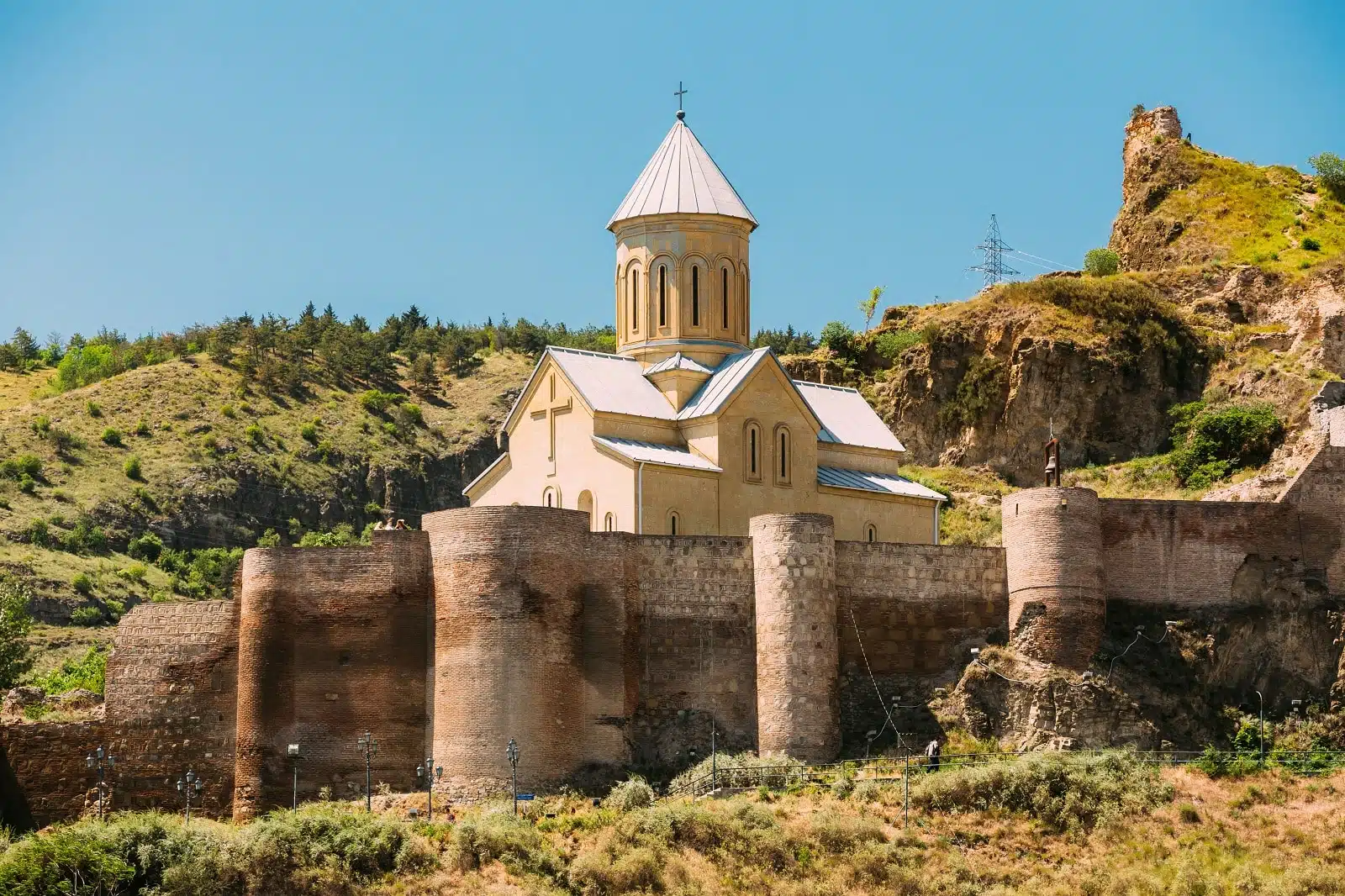
Image Credit: Shutterstock / George Trumpeter
In Tbilisi, Georgia’s capital, you’ll be greeted by a city that charmingly blends diverse architectural styles and enjoys a picturesque setting along the banks of the Kura River. This city, once a vibrant hub on the Silk Road, proudly displays its rich history in every corner. As you explore Tbilisi, you’ll come across caravanserais. In these historic roadside inns, travelers and merchants on the Silk Road would rest and recover. With their distinct architectural styles, the city’s old churches tell stories of Georgia’s deep-rooted Christian heritage. A visit to the Narikala Fortress, an ancient symbol of Tbilisi’s defense, offers panoramic views of the city and a glimpse into its past strategic importance. Tbilisi’s blend of history, culture, and scenic beauty makes it a captivating destination, offering you a unique window into the legacy of the Silk Road.
Insider’s Tip
Enjoy the city’s famous sulfur baths for a unique local experience.
When To Travel
May to June and September to early November.
How To Get There
Fly into Tbilisi International Airport.
Venice, Italy
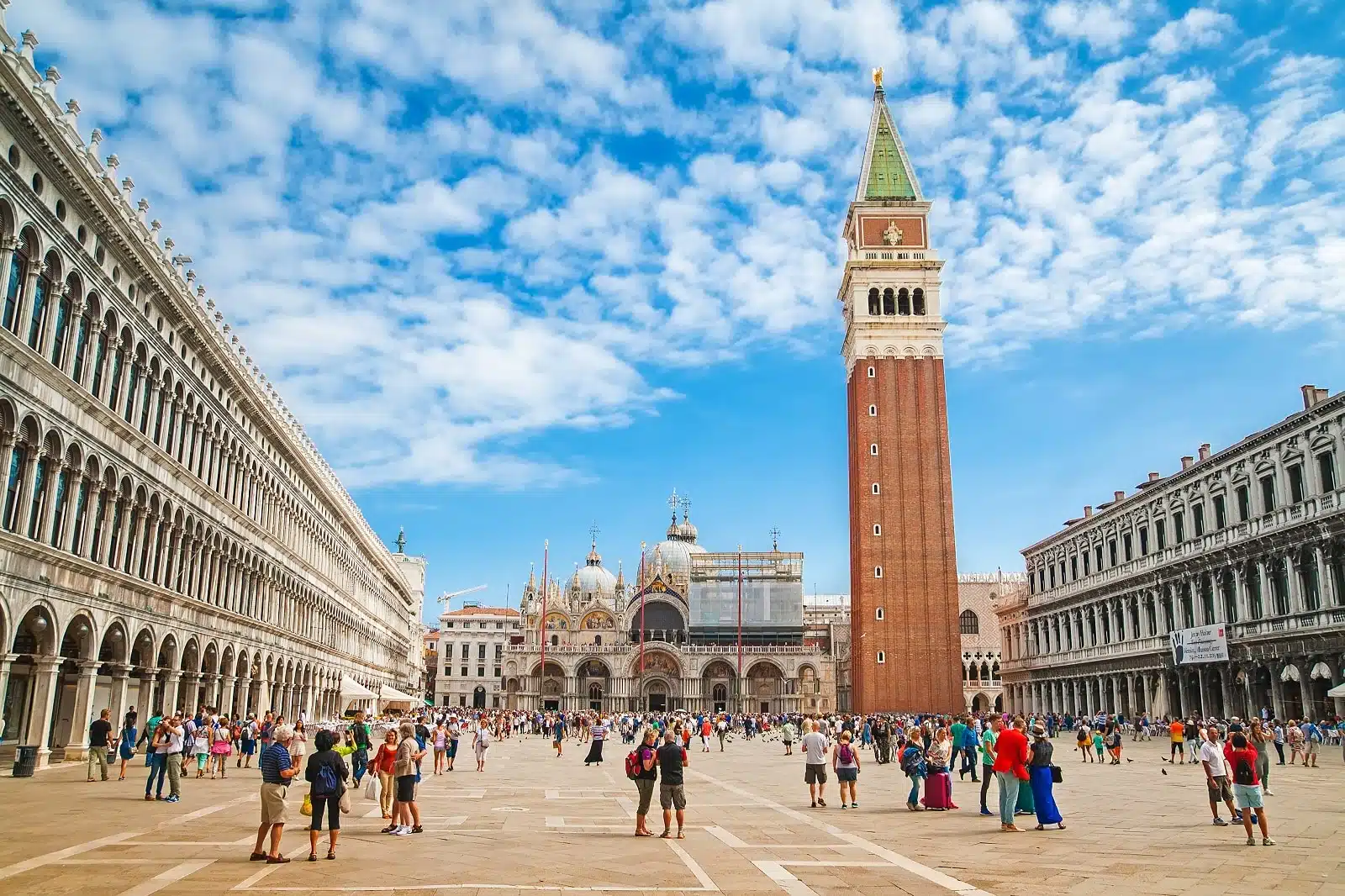
Image Credit: Shutterstock / Pani Garmyder
Venice is renowned for its intricate network of canals and a rich maritime history; you’ll find yourself at what was once a central European terminus of the Silk Road. Floating on water, this enchanting city is a testament to the cultural and commercial exchanges that flourished along this historic trade route. As you glide along its canals or wander through its narrow alleys, you’ll be surrounded by architectural marvels and artistic masterpieces that reflect the city’s past as a melting pot of cultures. From the grandeur of St. Mark’s Basilica to the opulent Doge’s Palace, every building and artwork in Venice tells a story of a time when the city was a pivotal crossroads between East and West. Your journey through Venice is not just a tour of a city; it’s an exploration of a living museum showcasing the legacy of the Silk Road in its full splendor.
Insider’s Tip
Explore the less crowded neighborhoods of Venice for an authentic experience.
When To Travel
Spring (April to June) and fall (September to November) to avoid the crowds.
How To Get There
Fly into Venice Marco Polo Airport.
The Bottom Line
Traveling along the Silk Road transcends a mere geographical journey; it’s an expedition through various epochs and a multitude of cultures. As you traverse this ancient route, each destination unfolds its unique chapter of history, revealing stories that have shaped civilizations. You’ll encounter architectural marvels that are silent witnesses to the past, each with its own tale of glory, conquest, and exchange. These cultural treasures, ranging from grand palaces to ancient bazaars, are not just remnants of history; they are vibrant parts of the living cities and towns you’ll explore. This journey along the Silk Road connects you with the legacy of one of history’s most influential trade routes. It offers a profound understanding of how our world’s cultures and histories are intricately woven together, showcasing the rich tapestry of human connection and exchange that has spanned centuries.
Featured Image Credit: Shutterstock / Efired.
